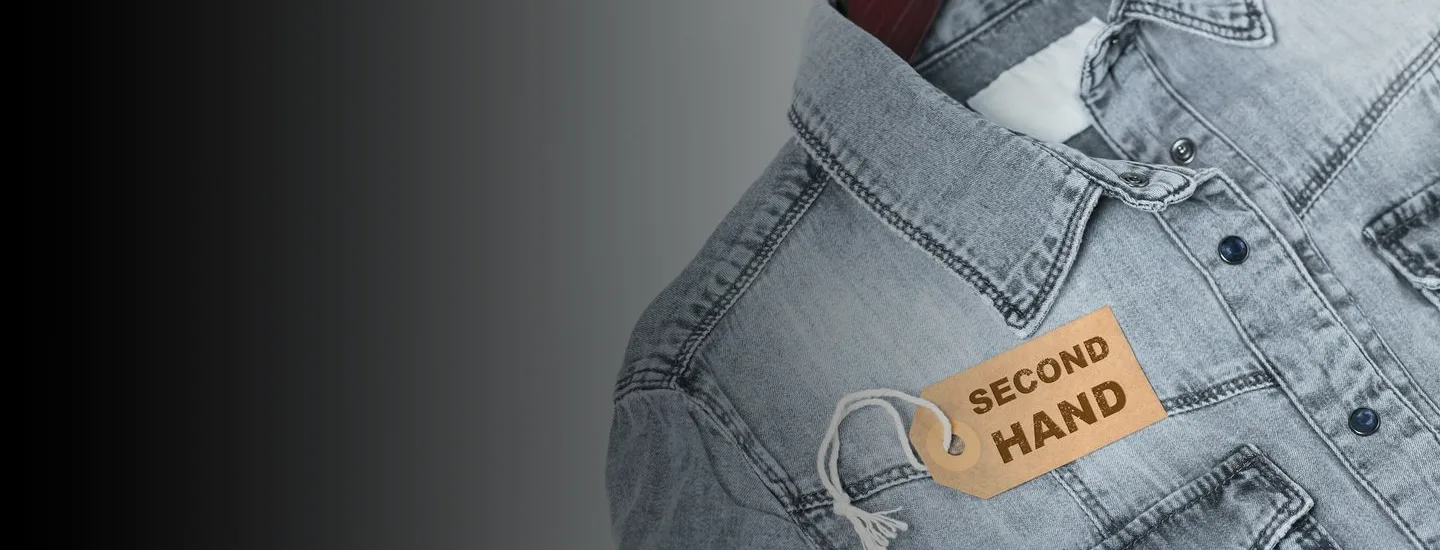The consumer spending outlook is bleak. Inflationary pressures may be stabilizing, but consumer spending remains low heading into the fall. The sustained economic downturn has forced families to budget carefully to meet the rising costs of essentials. Compounding the impact, student loan repayments are set to resume in October after a three-year pause.
As such, it’s no surprise consumers are increasingly turning to second-hand shopping. More than half shopped this way in 2022, when the global second-hand apparel and footwear market reached $177B. It’s expected to double by 2027.

Those looking to stretch their budgets during tough times are increasingly leaning into the circular economy. Of the 37% who spent a higher proportion of their apparel budget on second-hand in 2022, 63% did so in response to inflation, according to thredUP’s 2023 Resale Report.
Yet despite its popularity, retailers have struggled to make second-hand profitable—though not for lack of effort. The number of brands with resale programs more than tripled from 2021 to 2022 per thredUP. But even those that specialize in online consignment and resale have difficulty turning a profit. Traditional retailers that add a second-hand offering to their existing mix should not expect it to make money on its own.
However, that doesn’t mean you should ignore this burgeoning space. Given the economic crunch many companies are feeling, retailers must get creative to retain customers while also attracting new ones. A strategic resale offering can do both. But there are clear challenges to doing so efficiently.
If you decide a second-hand channel is right for you, take heed of these three factors:
Set it up right. Implement tight metrics and governance.
You must be clear on what you’re looking to get out of a resale program from the onset. Are you trying to drive lifetime value or loyalty? Store traffic? Customer acquisition—particularly of a different type of customer than would normally shop with you?
You can’t optimize for everything, so it’s crucial to decide on one or a select few KPIs that will determine success or failure and focus your efforts on amplifying these numbers. Getting senior buy-in and alignment on your resale goals—for instance, lowering customer acquisition costs (CAC) via the channel—should be table stakes to invest in an offering.
Don’t do it on your own. Leverage third parties.
Think of resale as running a business in which your products are entirely returns that need to be refurbished. Brands that try to install programs on their own run into a host of problems around returns processing, including:
- Excessive shipping costs (paying for the seller to send to you and then shipping out post-sale) and high labor and energy expenses to clean or refurbish products.
- Poor authentication of goods leading to reputational damage.
- Operational nightmares due to the constant, hectic exchange of rebought and resold inventory.
- Subpar customer experiences that prevent willing consumers from participating.
Third-party service providers make it easy to ramp up operations, providing logistics support and capabilities that are far more difficult to build out internally. Leading “recommerce” platforms like Trove, Archive, Treet, Recurate, Reflaunt, and more have developed custom operating systems that streamline the buy-back of used items and optimize the resale process. Partner with the experts.
Get creative. Don’t install pure resale—make your offering innovative.
Most brands that enter the second-hand space follow the same blueprint: set up a microsite, allow customers to sell used apparel for cash or store credit, and let shoppers browse the bought-back items. Such an implementation won’t help your bottom line and isn’t likely to bring in consumers who don’t already buy your merchandise (outside of aspirational brands that can entice customers who are usually priced out).
Stand out from the crowd with an innovative, thoughtful approach that resonates with your brand’s loyal base while also attracting new customer segments. If possible, you can tie your marketing into existing ESG initiatives that highlight reduced waste, further incentivizing potential shoppers. For inspiration, look to Coach and Nike, two brands doing this right.
Coach launched Coachtopia, a program that rethinks the end-to-end product lifestyle. The luxury brand’s upcycling approach takes unused leather and other Coach production waste, and repurposes the excess into new bags, shirts, and accessories. Nike Refurbished sees the sportswear giant take lightly used Nike shoes, refurbish them, and then sell at a discount at select Nike stores—mostly outlets. As Nike knows its own products best, authenticity isn’t an issue. The company grades each pair on a scale of “like new,” “gently worn,” or “slightly imperfect” which allows it to charge more for sneakers in better condition.
Many retailers have ventured into the second-hand space, but few truly move the needle with their implementations.
If you believe a resale channel is right for your brand, follow our advice to ensure a strategic, deliberate approach. Otherwise, you’ll be going in circles trying to master the circular economy.
